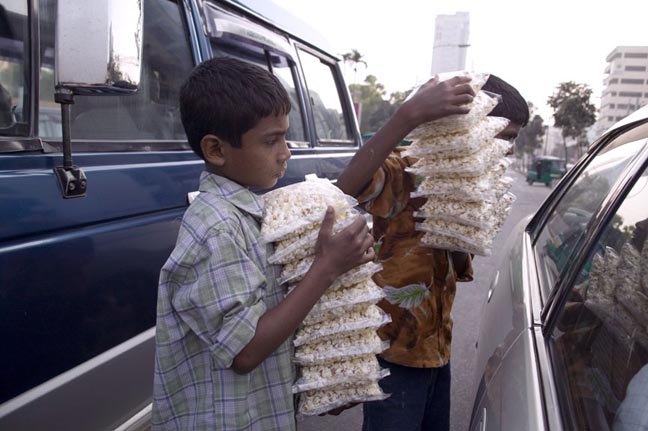We must start, as Kenny Natt would probably prefer it, with the defense.
 As you may have already heard, the Indian Senior Men's Basketball team had a better than great week at the office, er, court. India hosted four other SAARC teams (Sri Lanka, Bangladesh, Nepal, Bhutan) and competed in the Middle Asia Zone Qualifiers for the 26th FIBA Asia Basketball Championship. The Qualifiers were held at the Thyagraj Stadium in New Delhi from July 13-15th; the FIBA ABC will be held in Wuhan (China) from September 15-25.
As you may have already heard, the Indian Senior Men's Basketball team had a better than great week at the office, er, court. India hosted four other SAARC teams (Sri Lanka, Bangladesh, Nepal, Bhutan) and competed in the Middle Asia Zone Qualifiers for the 26th FIBA Asia Basketball Championship. The Qualifiers were held at the Thyagraj Stadium in New Delhi from July 13-15th; the FIBA ABC will be held in Wuhan (China) from September 15-25. Yes, India were supposed to have an easy time against the SAARC rivals, but this easy? Former NBA Head Coach Kenny Natt, who was hired less than two months ago, saw the Young Cagers play in their first competitive international action under him, and the results were glorious. India won the qualifiers and booked their ticket for China, beating Sri Lanka, Bangladesh, and then Sri Lanka again in the Final.
But back to the aforementioned defense. In those three games, India played its most inspired and organised defensive basketball I had ever seen. In the three games, India's hapless opponents made 37 field goals and committed 65 turnovers. India were ruthless, and they were ruthless from the beginning till the end. The turnovers led to quick offense and fast-break points on the other end.
 These were your Final scores:
These were your Final scores:India won each game by an average margin of nearly 68 points per game, and they managed it with only three players averaging in double digits! The defense was marvelous, with India holding their opposition to just 35 points per contest.
The next thing I must mention is balance: with the opposition giving less than an inspired challenge, Natt was able to play all of its 12 players on the roster regularly. Nobody played less than 10 minutes a game, and no one played more than 23. India played amazingly unselfish basketball, and looked like a real team. Whenever an extra pass could be made, it was. Wing players like Vishesh Bhriguvanshi, Hareesh Koroth, Trideep Rai, and Prakash Mishra got a large number of open looks from the three point line because of the great passing and spacing, and the players did well to convert their open looks.
 Despite averaging over 100 points a game, India's leading scorer, Vishesh, only put up 15 a game individually. Jagdeep Singh, who was one of the most explosive players on the court, made it a point to fire up the crowd and indimidate the opponents by a wide array of dunks, and averaged 12.33 points a game.
Despite averaging over 100 points a game, India's leading scorer, Vishesh, only put up 15 a game individually. Jagdeep Singh, who was one of the most explosive players on the court, made it a point to fire up the crowd and indimidate the opponents by a wide array of dunks, and averaged 12.33 points a game. The only other player to crack a double digit average was a surprise package - 20-year-old big man Amrit Pal Singh has really come into his own under Natt. Amrit Pal was amazingly efficient, playing just 12 minutes a game but averaging 13.33 ppg to become India's second highest scorer. His presence in the post will a boon for the Indian team in the future, and his combination of size, strength, and speed, will send shivers down opponents' backs if he continues to improve the way he has.
I was also impressed by India's backcourt bench players, Koroth and Mishra, both of whom played the most amount of minutes in the qualifiers. They were both very influential in both creating the offense for others and of course, scoring themselves.
 Natt's squad had great balance to it in terms of youth and experience. Two players thought to have been left behind by Indian Basketball's youth wave - Sambhaji Kadam and Riyazuddin - made great comebacks to the national side. Kadam was India's starting point guard, led the team in assists, and had a Jason Kidd-esque veteran role as the team's mature leader. Riyaz came off the bench to give valuable minutes as a glue-guy.
Natt's squad had great balance to it in terms of youth and experience. Two players thought to have been left behind by Indian Basketball's youth wave - Sambhaji Kadam and Riyazuddin - made great comebacks to the national side. Kadam was India's starting point guard, led the team in assists, and had a Jason Kidd-esque veteran role as the team's mature leader. Riyaz came off the bench to give valuable minutes as a glue-guy. And then there's the youth: Punjab's young, big men Amjyot Singh (19) and Satnam Singh Bhamara (15) took important strides as their made their India debut. Both youngsters showed nervousness at times but also showed flashes of their incredible potential.
Oh, yes, you read that last paragraph right. Satnam Singh Bhamara, 15. That same 15-year-old, seven-foot-one, son of a Punjabi farmer, who is currently at a basketball scholarship at the IMG Academy in Florida (USA), and in his holidays, made a debut with the Indian national team and led them in rebounds (yes, he did). Bhamara is still nervous, still makes silly mistakes, still has slow reactions. But hell, he's FIFTEEN. Bhamara has a long way to go, but this tournament was a crucial first step in his development as a star for India.
 Natt, a former NBA coach, had little knowledge or experience with Asian competition, but he did a great job in keeping India disciplined, no matter how ridiculously lopsided the advantage seemed.
Natt, a former NBA coach, had little knowledge or experience with Asian competition, but he did a great job in keeping India disciplined, no matter how ridiculously lopsided the advantage seemed. So that was India - mostly good news and positivity. Unfortunately, I can't say the same for our opposition. And that is what concerns me, and that is what clearly concerned Natt, who will of course be playing against much upgraded competition in Wuhan. India has been grouped alongside Lebanon, Korea, and Malaysia. There will be no more 94 point wins and Natt will have little room to experiment with the bench. The FIBA Asia Championships will be a different animal, of course, and against certain competition, India may well be at the receiving end of the kind of punishment they have handed the SAARC competition.
"We're still a young group of guys, and we will still be getting better as a defensive team after each game," Natt told reporters after his first game as coach, "I'm really looking down the road, looking to get better defensively for the future."
And just as it had begun, we must also end with the defense. India will rarely get easier challenges than they did this week, but to toughen up against the big boys, it will be defense that will dictate the team's future.




















.jpg)


















